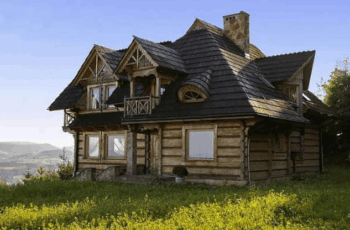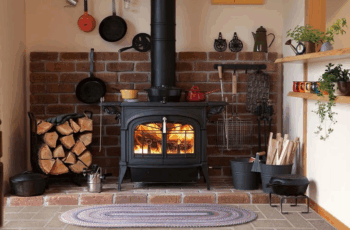
Living in a cabin is truly special—a retreat into nature, away from the hustle of city life. But as much as we love this rustic charm, there’s one thing that can really put a damper on the peaceful vibe: pests. Wood cabins, with their nooks and crannies, can unintentionally invite a range of critters that nobody wants crashing the party. Luckily, keeping these uninvited guests at bay isn’t as complicated as it might seem. With a few smart moves, you can protect your cabin and keep it feeling cozy and calm all year round. Here are seven practical tips that will help you deal with pests naturally and effectively.
First up, it’s all about sealing those tiny gaps and cracks where pests sneak in. You might not notice them at first glance, but rodents, ants, and spiders are masters of finding the smallest openings—around windows, doors, or even where pipes poke through walls. Grab some caulk, weatherstripping, or expanding foam and fill those spaces. Even adding door sweeps to block the bottom of your doors can make a huge difference. This isn’t a one-and-done task either; seals wear down over time, so keep an eye on them and patch up as needed.

Food storage is a bigger deal than you might realize when it comes to pest prevention. Leaving crumbs around or keeping food in unsealed containers is basically handing out invitations to ants, mice, and more. Use airtight containers for dry goods, and keep fruits and veggies chilled or tightly wrapped. And don’t forget about pet food—stashing it away overnight is a must. If you’re only at the cabin seasonally, clear out all food before you leave to avoid turning your place into a buffet for bugs and rodents while you’re away.
Keeping the cabin clean goes hand-in-hand with smart food storage. Dirt and crumbs may seem harmless, but they add up quickly as a snack buffet for pests. Regular sweeping and vacuuming, wiping down surfaces, and taking out the trash daily make your space way less inviting. Some spots don’t get noticed often—like under furniture or behind appliances—so give those a thorough clean every now and then. Doing a deep clean once a month helps keep the problem from sneaking up on you.
You don’t always have to rely on harsh chemicals either. Nature offers some surprisingly effective ways to keep pests at bay. Peppermint oil, for instance, is a favorite—mice, spiders, and ants just hate the smell. Mixing it with water and spraying around entry points works wonders. Diatomaceous earth is another natural option that kills crawling insects but is safe for pets and humans. Even rubbing citrus peels along windowsills and door frames can repel certain bugs. Plus, planting herbs like lavender, basil, or rosemary nearby not only smells nice but helps keep the creepy crawlies away.
Moisture control is another key piece of the puzzle. Many pests, like cockroaches and silverfish, thrive in damp, humid spots. Fix any leaky pipes or dripping faucets as soon as you spot them. Running a dehumidifier can keep the air dry, ideally below 50% humidity. Make sure places like bathrooms and basements have good ventilation to prevent damp build-up. Also, check your gutters and downspouts regularly so water flows away from your cabin’s foundation—standing water invites termites and other wood-loving pests.
Physical barriers go a long way too. Installing fine mesh screens on windows and vents keeps flying insects outside, while sturdier wire mesh can block rodents and birds from chimneys or attic openings. Sticky traps or bait stations placed strategically around kitchens and basements can catch pests early before they multiply. Outside, adding gravel or stone borders around your cabin’s base can discourage crawling insects and rodents from getting too close.

Last but definitely not least: regular inspections. This step is about catching any trouble before it gets out of hand. Look for signs of rodents—droppings, gnaw marks, or noises—especially in attics, under eaves, or behind furniture. Check firewood stacks for termites or carpenter ants, and pay attention to any rotting wood or holes in your cabin’s structure that could be entry points. If you find a serious infestation, don’t hesitate to call a professional pest control service. It’s better to tackle big problems early than let them cause costly damage.
To keep pests from making a comeback, think about your landscaping too. Trim back any trees or shrubs that might act as bridges for critters to reach your cabin. Store firewood at least 20 feet away and keep it elevated off the ground—this helps keep termites and rodents at bay. When it comes to outdoor lighting, choose yellow or sodium vapor bulbs since they’re less attractive to bugs compared to bright white lights.
At the end of the day, pests are just trying to survive like we are. If you cut off their access to food, shelter, and moisture, they’ll have little reason to stick around. Keep your cabin clean, dry, and well-maintained, and you’ll enjoy your quiet sanctuary without those unwanted guests crashing your peaceful escape.


